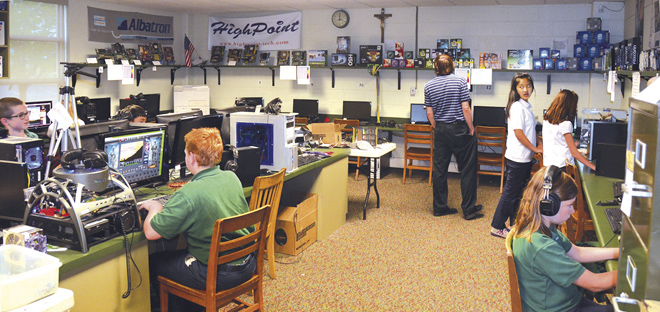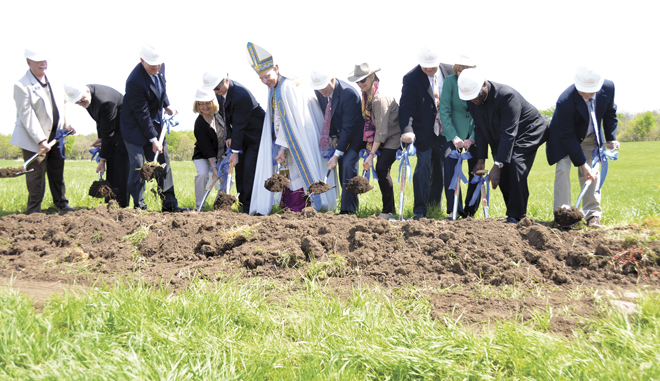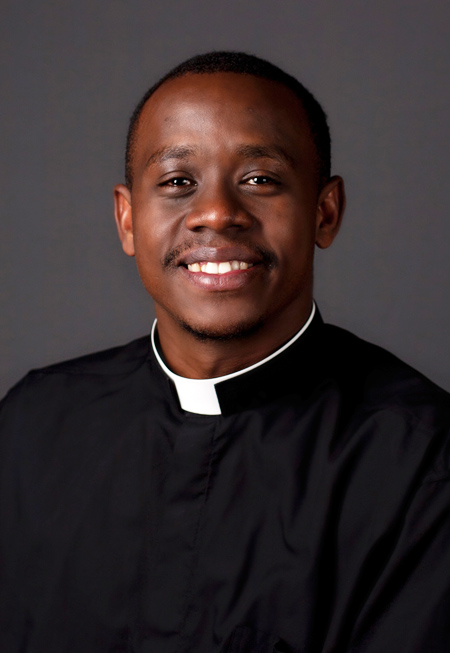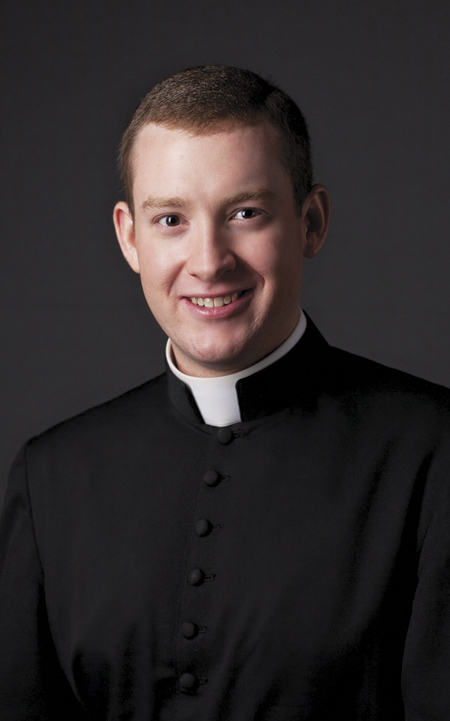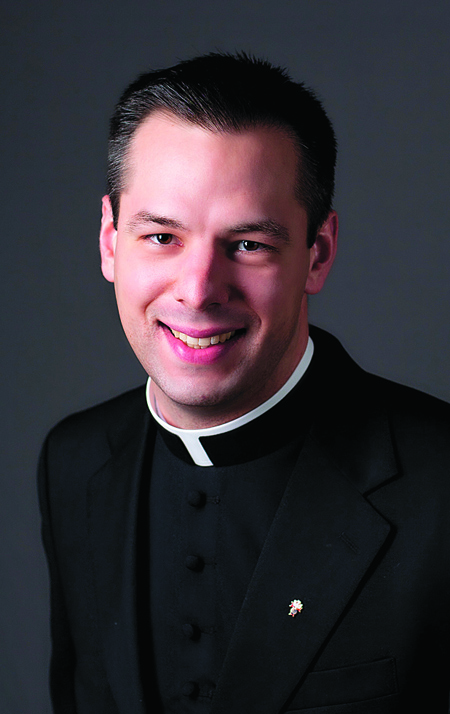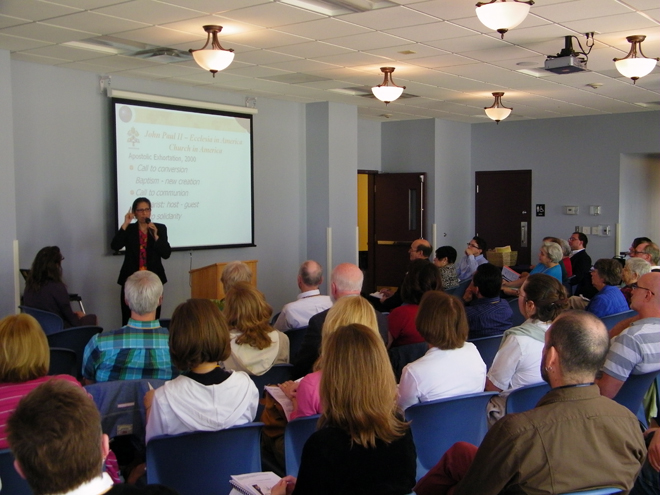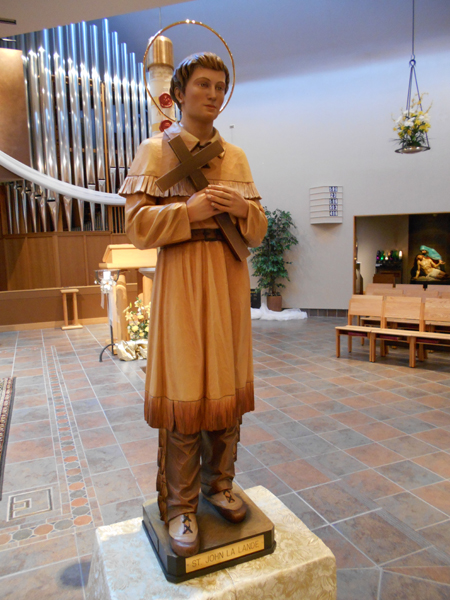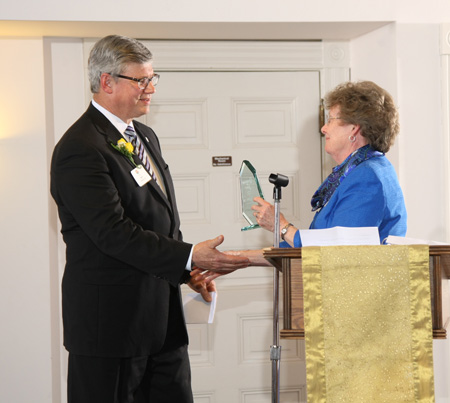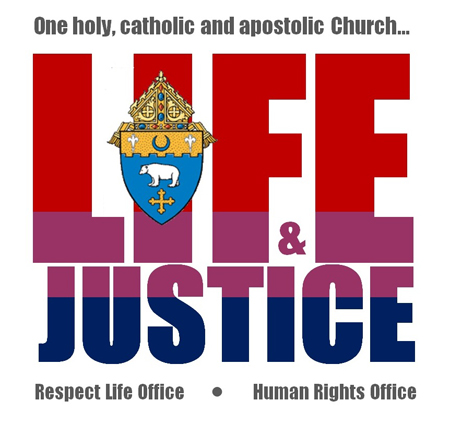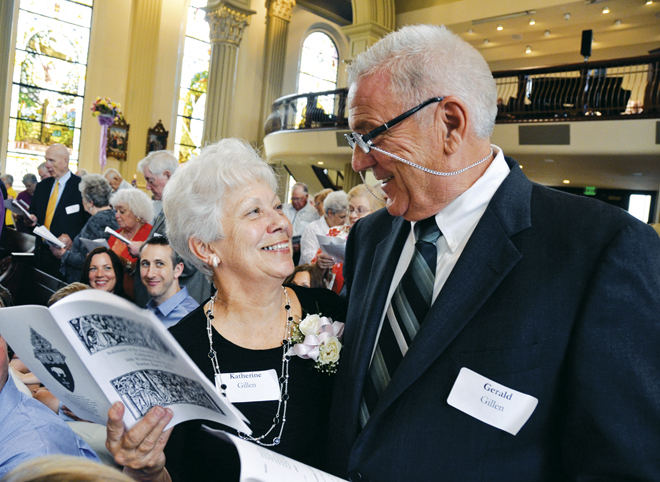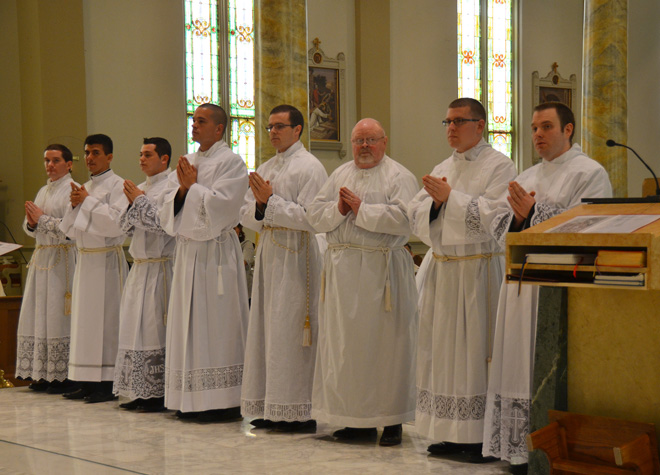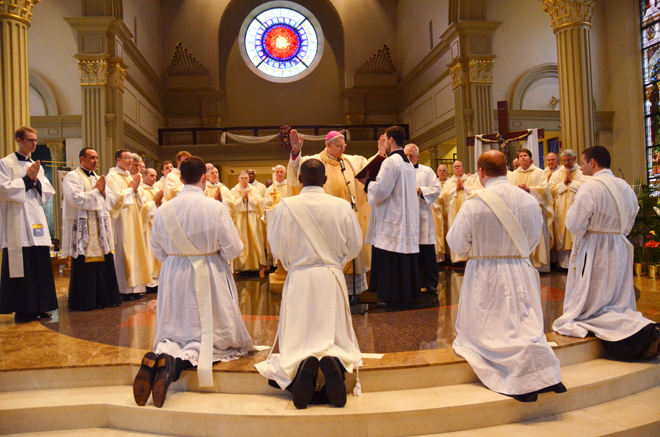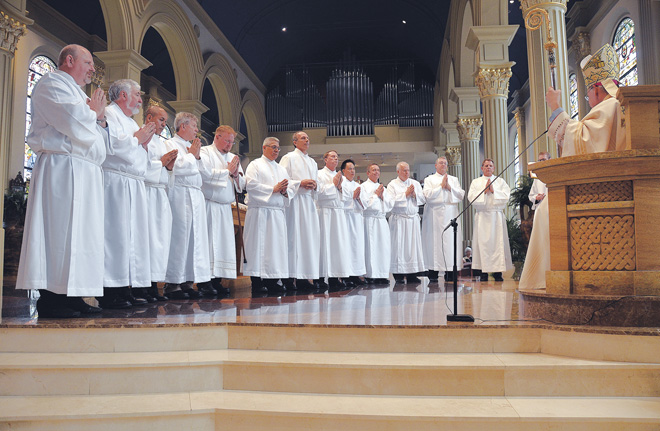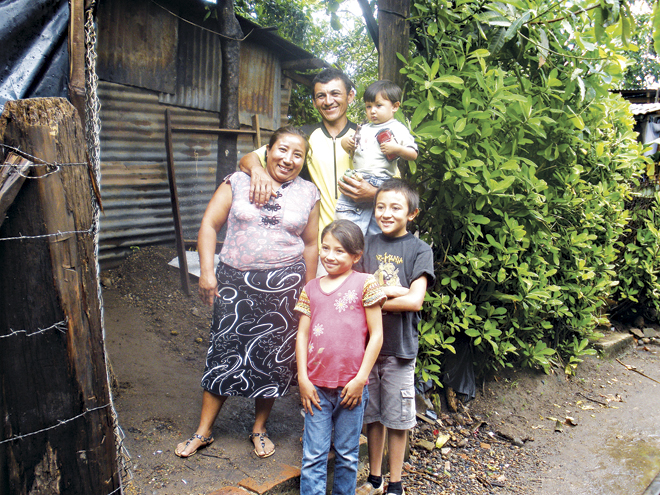
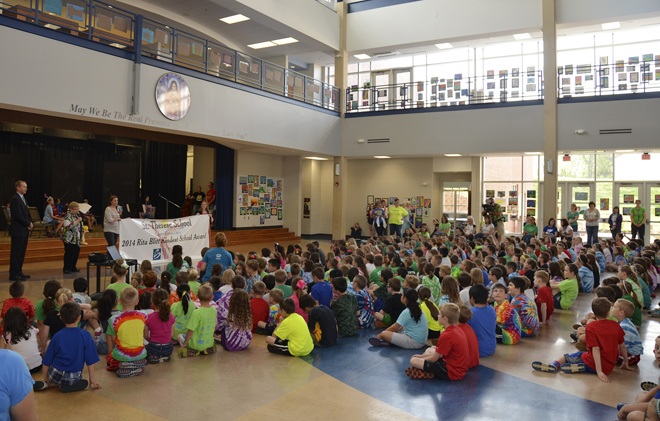
Representatives of Synergy Services present their Kindest Kansas City School award to students, teachers, and staff at St. Therese School in Parkville. St. Therese is the first Catholic school to win the distinction. (Marty Denzer/Key photo)
By Marty Denzer
Catholic Key Reporter
PARKVILLE — Synergy Services has been advocating kindness and non-violence in the Kansas City area for more than 40 years. Each spring the Kindest Kansas Citian contest is announced; men and women from all across the metro area are nominated. Not as well-known is the Kindest School in Kansas City award. For the past seven years, Synergy Services has reviewed nominations and selected the metro grade or high school that daily demonstrates kindness and helping others. The 2014 Kindest School in Kansas City is St. Therese School in Parkville, one of seven schools selected since 2008 and the first Catholic school to receive the accolade.
The award was presented to the school during the Spirit Day assembly May 7, by Synergy Services’ executive director Robin Winner.
The school was nominated by school parent Cheryl Givens, who said, “I wanted to do something special for St. Therese School, because St. Therese School is very special to our family.”
She has a daughter in third grade at St. Therese, and two sons at St. Pius X High School who attended St. Therese from kindergarten through eighth grade. Twelve years of experiences and knowledge of St. Therese School provided many reasons why she considered it the area’s kindest.
A diocesan grade school, St. Therese joins the other diocesan schools in embracing a theme to focus on each school year. The theme for the 2013-14 academic year has been “Beatitudes: Living Like Jesus,” which provided guidance on kindness, being committed to helping others and to community service.
At St. Therese, the Beatitudes, which Jesus preached during the Sermon on the Mount (Matthew 5:3-11), are printed on posters, studied in classrooms and featured in the school newsletters.
“Blessed are the poor in spirit, for theirs is the kingdom of heaven. Blessed are the meek, for they shall possess the land. Blessed are they who mourn for they shall be comforted. Blessed are they who hunger and thirst after justice; they shall have their fill. Blessed are the merciful for they shall attain mercy. Blessed are the clean of heart, for they shall see God. Blessed are the peacemakers for they shall be called the children of God. Blessed are they that suffer persecution for justice sake for there is the kingdom of heaven.”
Monthly “Christ Skills” emphasized the importance of qualities like empathy (October), Respect (March) and Acceptance (May) in the students’ daily lives.
Each grade level participates in at least one community service project during the school year. The projects are tangible evidence of the impact the yearly theme has on the students. For example, this year, several eighth grade students presented leadership ideas to the student council, calling their project Team Inspire: Giving Circle. The Team Inspire project, a global movement, is dedicated to bringing young people a sense of self-worth, humility and compassion through inspiration. The St. Therese Student Council wanted to make sure the global concept fit with the Catholic faith so they combined Team Inspire with the school’s dedication to service. Part of the initiative included speakers from Harvesters, Backsnack, Hillcrest Transitional Housing and other charitable organizations making presentations to 5th through 8th graders at St. Therese School.
The 6th grade, which for several years has paired with Synergy Services’ Youth Resiliency Center as part of its Social Justice program, sponsored fundraisers during Synergy Week, begun by 6th graders a couple of years ago, to help YRC with its needs. This year, during the Spirit Assembly, a check in the amount of $1,021.33 was presented to Synergy Director Robin Winner.
Cheryl enumerated many other service and kindness projects, classes and fundraisers as well as the general kindness, compassion and acceptance shown by students, faculty and parents to each other. Her detailed nomination as well as Synergy Services’ knowledge of St. Therese School may have combined to make the school the clear winner in the Kindest Kansas City School contest.
Winner presented the award, a wood sculpture created by Kansas City artist Rita Blitt, to the school. Carol Lenz, St. Therese principal, said the sculpture will be placed in the school where it can be easily seen. Synergy Services also gave the school a banner proclaiming St. Therese the 2014 Kindest Kansas City School, which will be hung outside the school.
The assembly continued, highlighting participants in several spring sports programs, the Drama Elective, and the passing of the torch from the outgoing Student Council to the incoming council.
When asked what kindness was, a small girl named Alix volunteered, “Kindness means to be nice and help others.”
That is part of the mission of St. Therese School, its faculty, staff, students and families.

